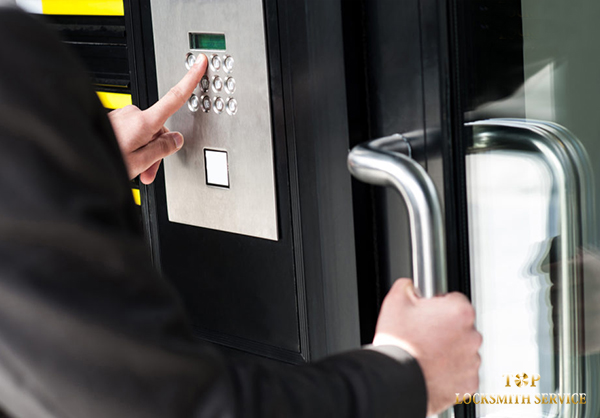There’s a wide variety of electronic entry technology that’s available for residential or commercial clients today. In this brief blog post, the electronic lock installation and keyless entry experts here at Top Locksmith will provide detail as to the different modes of electronic entry that users can opt to utilize at their property.
Authentication Tokens
This type of electronic entry involves the use of a physical device that interacts with the lock itself – from a card that swipes, to a transponder that sends out an infrared electronic signal. They are used with locks that require direct interaction between the user and the lock at close proximity. Advantages of authentication token use include the ability to program tokens to only open particular doors, as well as the ability to reset and revoke the token’s ability to open a door at any time. Disadvantages include the possibility of damage and loss, as well as the high cost of replacement.
Access Codes
This method involves an input of a particular set of information in a particular order, usually with a keypad. They are commonly used in safes, and offer an endless cryptographic variety, making them secure against simple guess work. They can be anything from letters and numbers to even physical maneuvers, depending on the make of the lock. Advantages of the use of access codes is the simplicity of use (simple memorization is all you need,) the ability to use seperate codes for seperate doors (as well as master codes for all doors,) and the near impossibility of the code being revealed by guessing. Cons include the vulnerability of the code to copying if witnessed by others, being forgotten by authorized users, and the statistical probability increase of it being guessed when numbers of codes used increase.
RFIDs
Radio frequency identification devices are like authentication tokens, but they do not need to be in proximity to the lock to open it. They allow for remote control of electronic locks (usually through web or BlueTooth based applications, and benefit as well as suffer from the same pros and cons as authentication tokens – however they benefit from the advantage of allowing a smartphone to be used as a key, remote programming, and ability to be operated from a far distance.
Biometric Locks
This technology uses information gathered and set based on various physical characteristics of the authorized users. Variations include fingerprints, retinas, irises, facial structure, and voice prints. The quality of this entry method depends on the quality of the sensor itself – as if it’s too discerning, even qualified users can be locked out due to chance errors, and if it’s too lenient, of course, it’s worth nothing in the security department. Advantages include the ability to operate it without needing a physical device or to memorize a code, as well as the ability to change or transfer the biometric information needed to open the lock. Disadvantages include the possibility of unauthorized entry using a photo or a voice recording, or the possibility of being locked out when authorized due to a cut, swelling, or slight variations in your vocal quality.
